If you’re trying to eat more vegetables or to create more balanced and complete meals, these 15+ easy vegan vegetable side dishes are for you! No matter which type of vegetables you love to eat, you’ll find a low-stress recipe to add color, flavor, and texture to your plate.
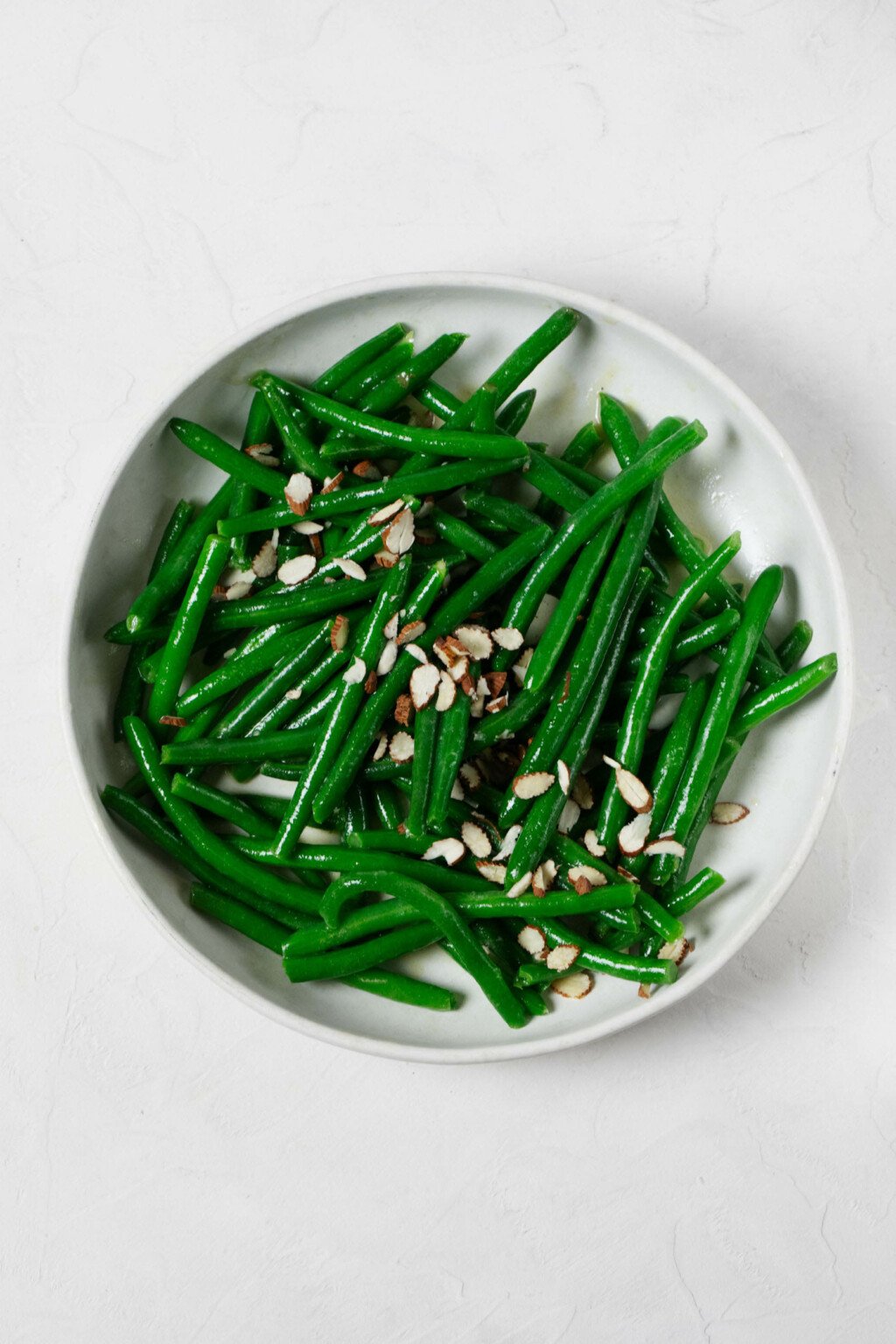
As a recipe developer, I tend to place a lot of emphasis on meals. When I wrote my cookbook Power Plates, that was actually the whole hook: a book in which each “recipe” was a balanced meal.
The reasoning behind this choice is simple: practicing as a dietitian has shown me that many people are prone to skimping or skipping out on a macronutrient when they build a meal.
Specifically, they might craft a plate that’s got plenty of carbs and healthful fats, but not enough (or any) plant protein.
Or perhaps there are carbs and protein, but the meal is lacking a sauce or vinaigrette, some avocado, some nut butter, or another source of fat.
As busy individuals with demanding lives, we need breakfast, lunch, and dinner ideas. The more balanced they are—the more they supply the macronutrients that keep us energized and healthy—the better.
Yet we need to eat our vegetables, too. That’s what today’s roundup of easy vegan vegetable side dishes is all about!
The value of a vegetable side dish
Sometimes an easy side dish is the difference between a meal that feels incomplete and a meal that’s wonderfully satisfying.
Some of this satisfaction is physical—in other words, our felt sensation of fullness. Vegetables are great sources of dietary fiber, and research suggests that fiber can help to keep us feeling full.
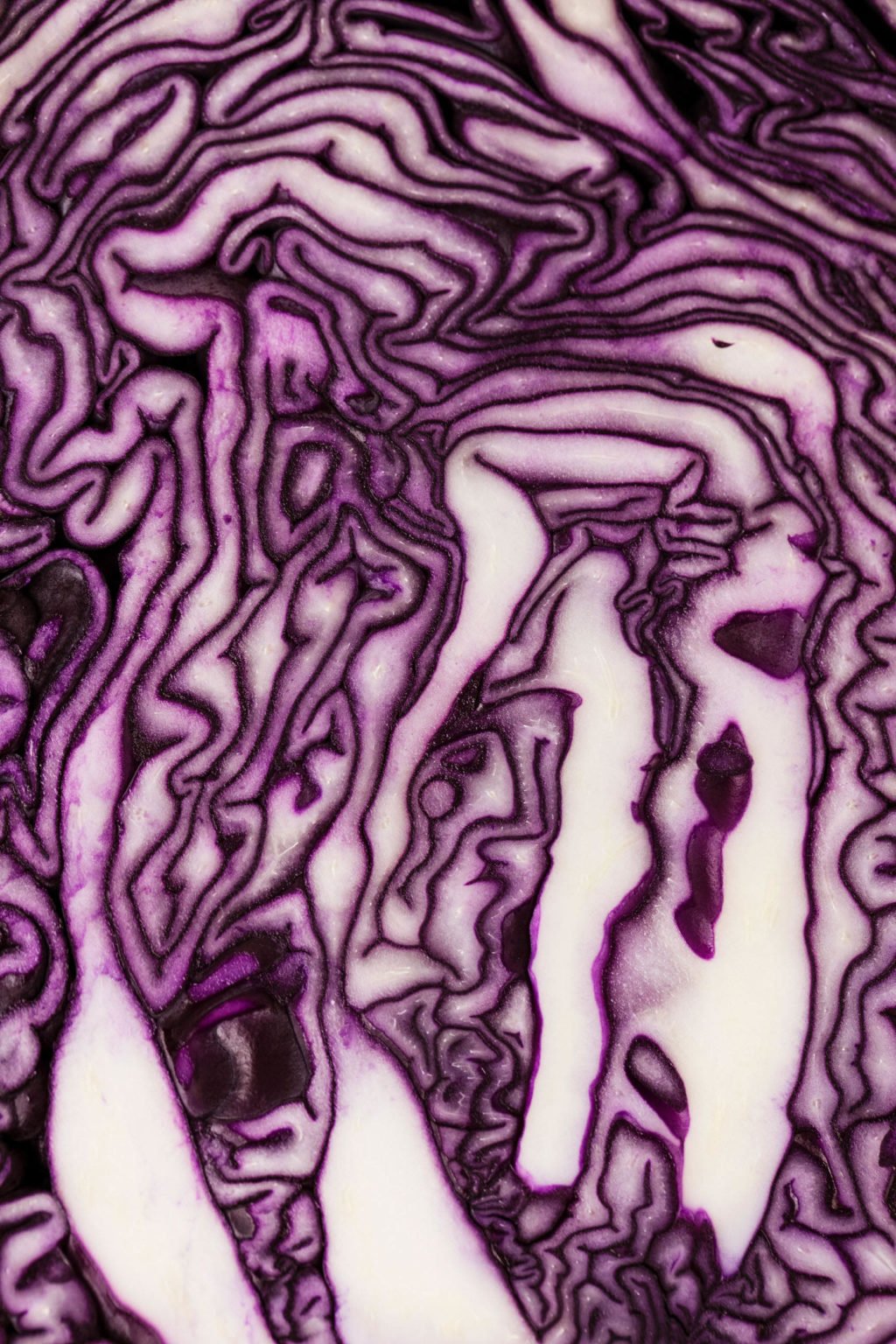
Some of it is sensory. Vegetables add color and beauty to our plates.
They provide texture contrast, too, whether that’s the creamy interior of a baked sweet potato, the crunch of a crisp salad, or the tenderness of oven roasted beets.
Finally, vegetable sides can instantly uplevel the nutritional quality of our meals.
The fiber that helps us to feel full is also beneficial for our digestive health, and it’s associated with cardiac health as well.
Regular consumption of phytonutrients, which are the plant-based pigments that give vegetables their brilliant colors, is associated with reduced rates of a number of chronic diseases.
A diet rich in varied phytonutrients—which is to say, a diet that’s visually colorful—may also help to offset some of the biological stress associated with aging.
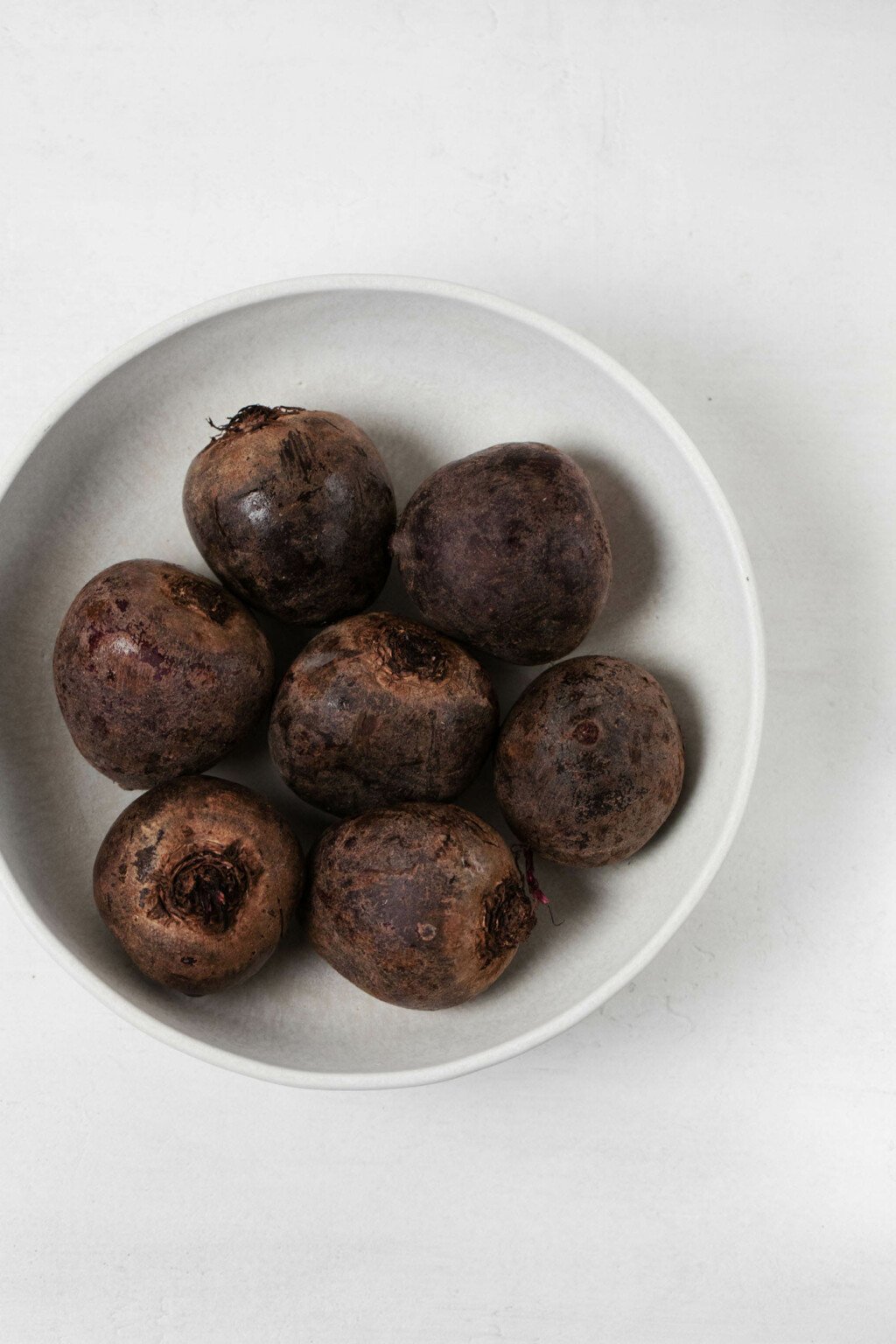
All of this is good reason for vegetables to be well-represented on one’s plate. In fact, the USDA’s MyPlate tool suggests that about half of one’s plate should be fruits or vegetables.
I’ve mentioned in the past that I like MyPlate overall, but I don’t always recommend that it be followed strictly.
Those in recovery from eating disorders and disordered eating, for example, often have a habit of relying on vegetables excessively because they know that vegetables tend to be high in fiber and low in calories. A plate that’s 50% carbohydrate, with a smaller portion of vegetables, is often the more healthful choice for them.
Folks with delicate digestive systems may also need to aim for more modest portions of vegetables. Fiber benefits digestion in some ways, but a lot of it can be irritating for IBS, IBD, and those with sensitivities to fermentable carbohydrates.
In other words, the point of this post isn’t for me to dictate how much vegetables any individual should be eating, or to suggest that more is always better. As an RD, I know that appropriate vegetable consumption, along with every other dietary choice, varies from individual to individual.
With that said, research shows that many Americans eat too few fruits and vegetables.
I’ve observed time and time again—with myself as an occasional case study!—how vegetable consumption can dwindle in the face of a hectic schedule and limited time to cook.
That’s why it’s so important to have vegetable side dish recipes that are quick and easy.
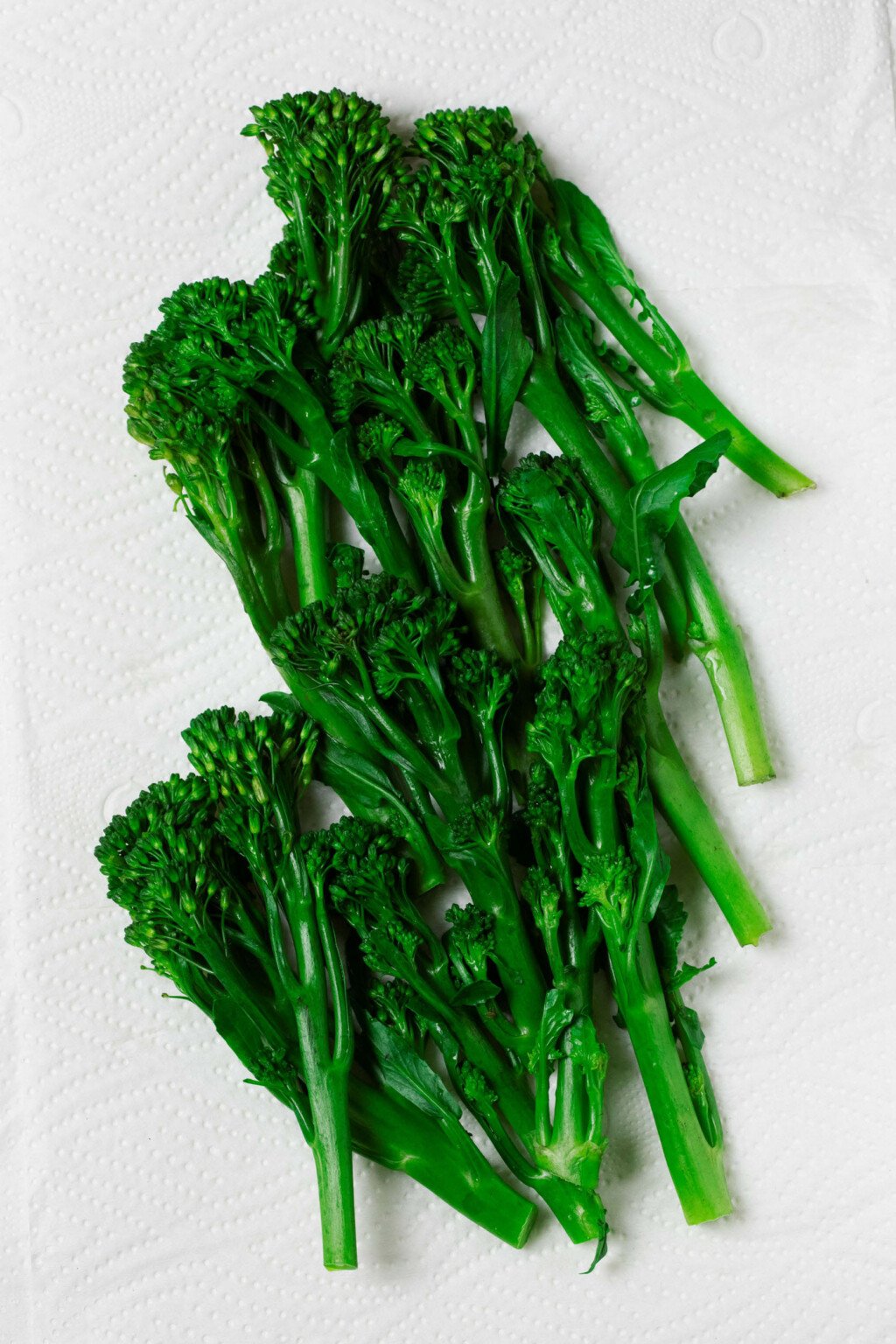
Low stress sides
When I’m home, trying to feed myself after a long day, I need vegetable side dishes that are uncomplicated.
My goal is to augment the nutrition and add to the abundance of my meal without creating too much extra work.
Of course I always aim for my recipes to have some layering of texture and flavor. But these days I need to strike a balance between culinary finesse and convenience.
This list will include such easy options as a butter lettuce side salad, oven-roasted beets that require almost no effort, and two steamed green vegetable dishes that come together in about fifteen minutes.
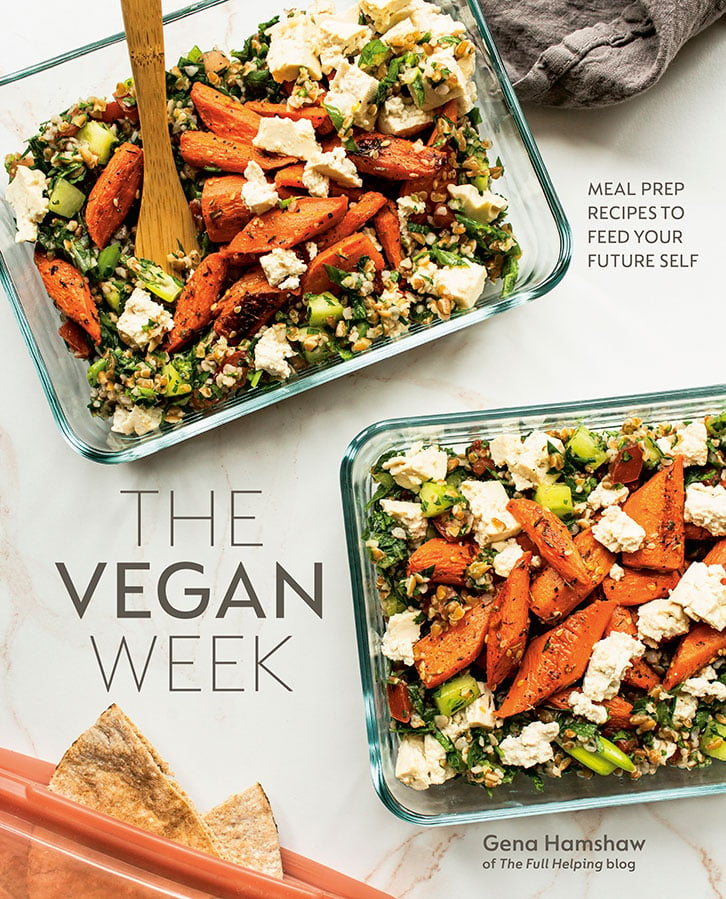
The Vegan Week
Embrace the joy of eating homemade food every day with the hearty and wholesome recipes in The Vegan Week.
Whether you have three, two, or even just one hour of time to spare, The Vegan Week will show you how to batch cook varied, colorful, and comforting dishes over the weekend.
In the time I’ve spent cooking and doing weekly vegan meal prep, I’ve learned a few overall best practices, if you will, for making low-stress vegan vegetable side dishes.
Here are some of the tips that I think are most important.
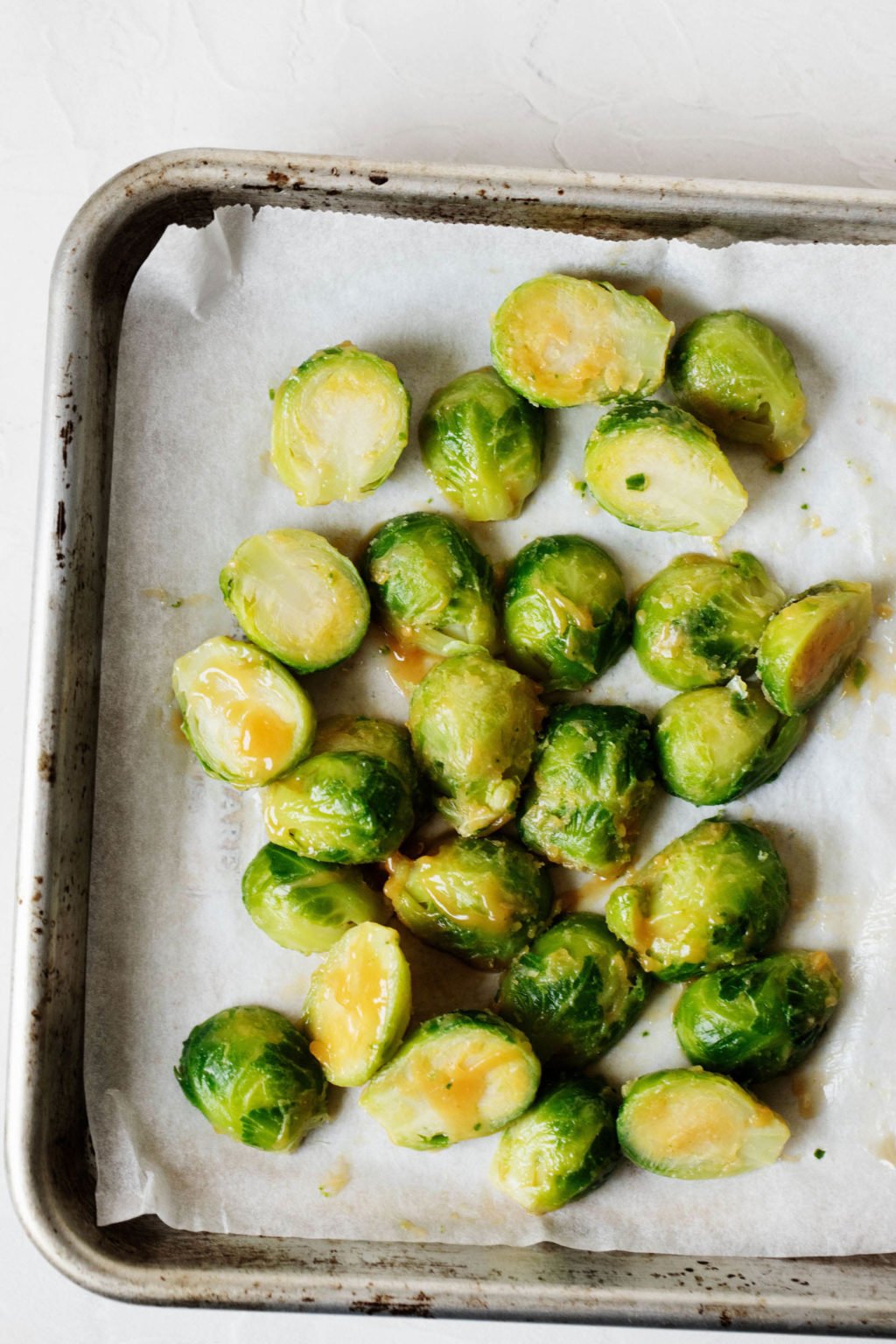
Tip #1: Let the oven do the work
Roasting is an easy, hands-off way to add lots of flavor to vegetables.
Tip #2: Rely on frozen vegetables as much as you’d like to
I love frozen vegetables. They’re fast, convenient, and forgiving.
Whereas there’s a decent chance that fresh vegetables might expire on my watch during a busy week, frozen vegetables will wait patiently in my freezer until I’m ready to prepare them.
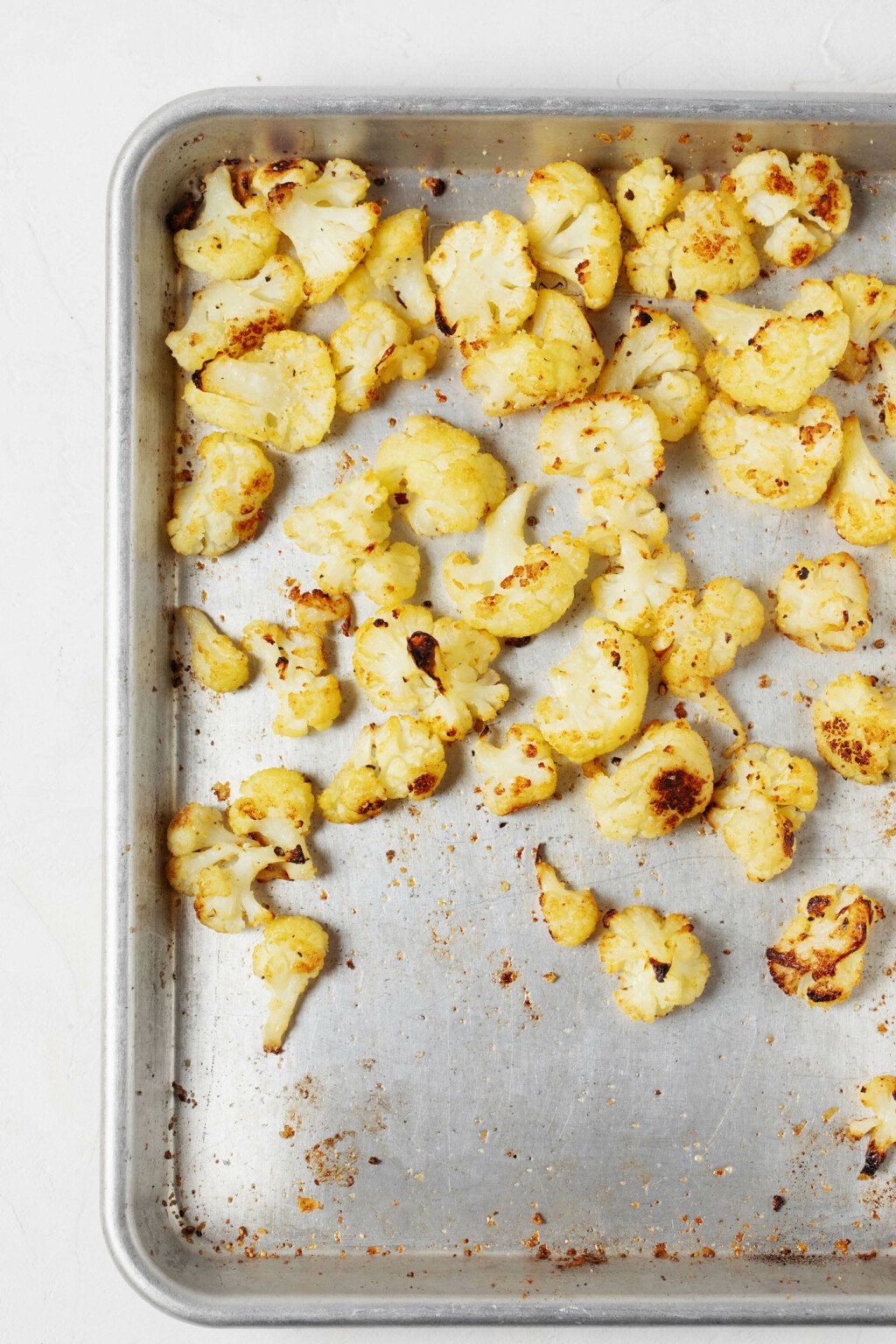
Roasted frozen cauliflower florets might be the type of frozen vegetable that I make the most often. But I also microwave a lot of frozen broccoli florets, green beans, peas, and mixed vegetables.
A little vegan buttah, salt, and pepper is all I need in order to enjoy any of the above, but salad dressing can be a nice topping, too.
Tip 3: Sauces and dressings are your friend
Speaking of dressing, many people are scarred by childhood memories of bland, un-dressed, mushy vegetables.
A wonderful sauce or salad dressing can be transformative. Tahini dressing turns humble steamed broccolini into a dish that’s memorable enough for entertaining.
Miso butter makes my all-time favorite roasted Brussels sprouts come to life.
A vinaigrette-style marinade transforms roasted beets into a versatile side dish or grain bowl component.
Vegan yellow cheese sauce is one of my favorite things to spoon over baked potatoes or steamed broccoli.
If you’re scratching your head about how to make a seemingly plain vegetable come to life, look no further than a drizzle of your favorite dressing or sauce.
Step 4: Be realistic about what you buy
We’ve all been there: the container of salad greens that we optimistically thought we’d turn into a salad has turned into a wilted, soggy mess after going unused all week long.
This is why it pays to be realistic about the vegetables that you purchase.
If I had to identify the two or three main lessons that I’ve gathered from my work as a dietitian, it’s that most of us cling to fantasy in a way that ultimately holds us back.
We plan for the lives we wish we were living, rather than the lives we’re actually inhabiting.
This shows up in a lot of ways. It can look like bookmarking recipes that are overly elaborate and then not making them.
It might take the form of refusing to place a grocery order for delivery, even though we don’t have time to get to the store.
Or perhaps we create a meal prep plan that’s far too ambitious, and ultimately we do zero meal prep as a result of our self-imposed overwhelm.
As someone who is all too prone to an excess of optimism in the planning stages of any task, I understand these patterns all too well.
I’ve also learned that the best cooking or meal prep plan is the plan that will actually happen.
To make a long story short: if you continually buy delicate vegetables that are likely to expire quickly, like salad greens, consider vegetables with a longer shelf life.
These include:
- Cabbage
- Beets
- Carrots
- Sweet potatoes
- Carrots
- Turnips and rutabaga
- Onions
- Winter squash
And of course, bags of frozen veggies will last for months.
Are there vegetable side dishes that I can freeze?
This is a great question. If storage is a priority for you, then it may be helpful to freeze prepared vegetables.
In spite of being a person who freezes nearly anything and everything, I don’t often freeze vegetables that I’ve already prepared. Vegetables have a high water content, so freezing and defrosting can impact their texture considerably.
However, there are some vegetables that I have no qualms about freezing, once prepared. They include:
- Braised red cabbage
- Mashed potatoes
- Baked or roasted sweet potatoes
- Roasted broccoli
- Roasted beets
What makes these vegetable side dishes vegan?
Of course, you may be wondering whether “vegan vegetable side dish” is sort of a redundant classification.
Actually, though, a lot of vegetable side dish recipes include cheese, butter, or yogurt. I’m often surprised at how tough it can be to find flavorful, fun vegetable side dish recipes online that don’t include dairy.
The list I’m sharing today is both dairy and egg-free.
This doesn’t mean that there can’t be creamy or buttery qualities in these side dish recipes. For example, you can always use vegan butter in place of dairy butter.
You can use all-purpose cashew cream, vegan yogurt, or vegan sour cream in place of their non-vegan counterparts.
When it comes to replacing cheese, there are plenty of excellent commercial vegan cheeses nowadays. But I also have a whole section of this blog dedicated to homemade vegan cheeses.
My favorites? 10-minute vegan ricotta cheese, cashew parmesan cheese, vegan feta cheese (made with tofu), and go-to cashew cheese.
15+ Easy Vegan Vegetable Side Dishes
Without further ado, here are the vegan vegetable side dishes that have filled my plates with color, made my taste buds happy, and flooded my body with micronutrients through hectic weeks, slow weeks, and all of the weeks in-between.
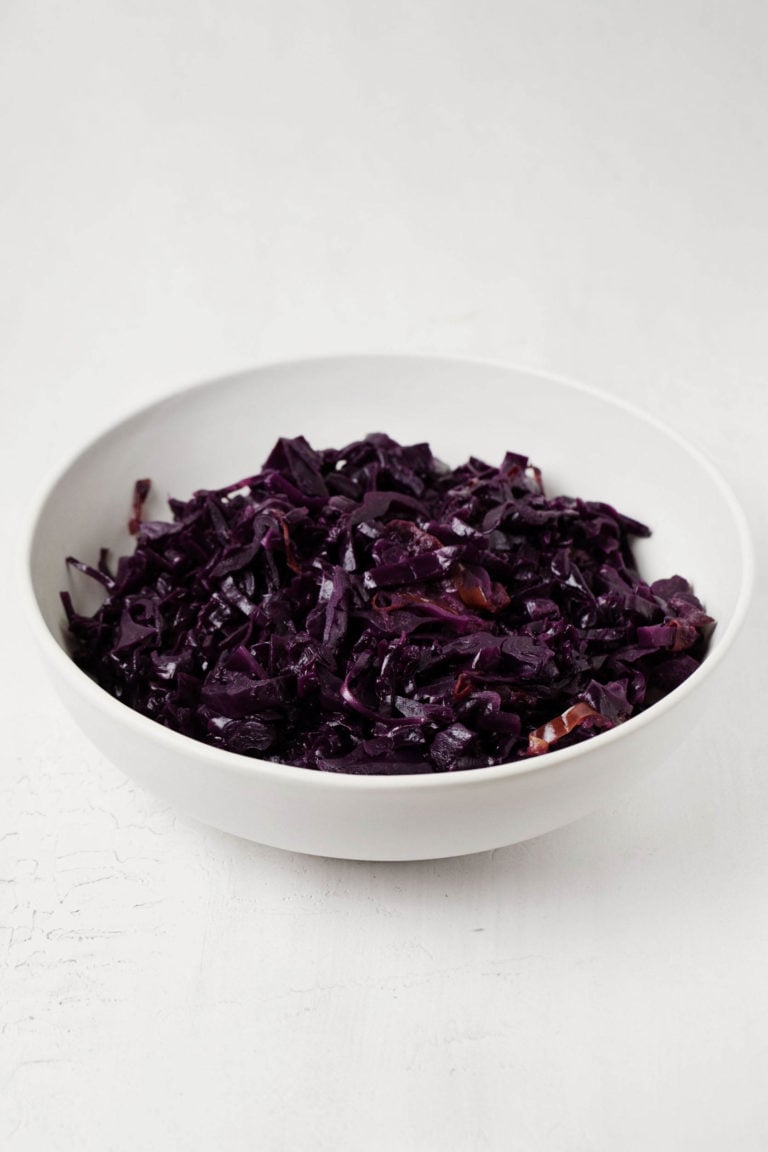
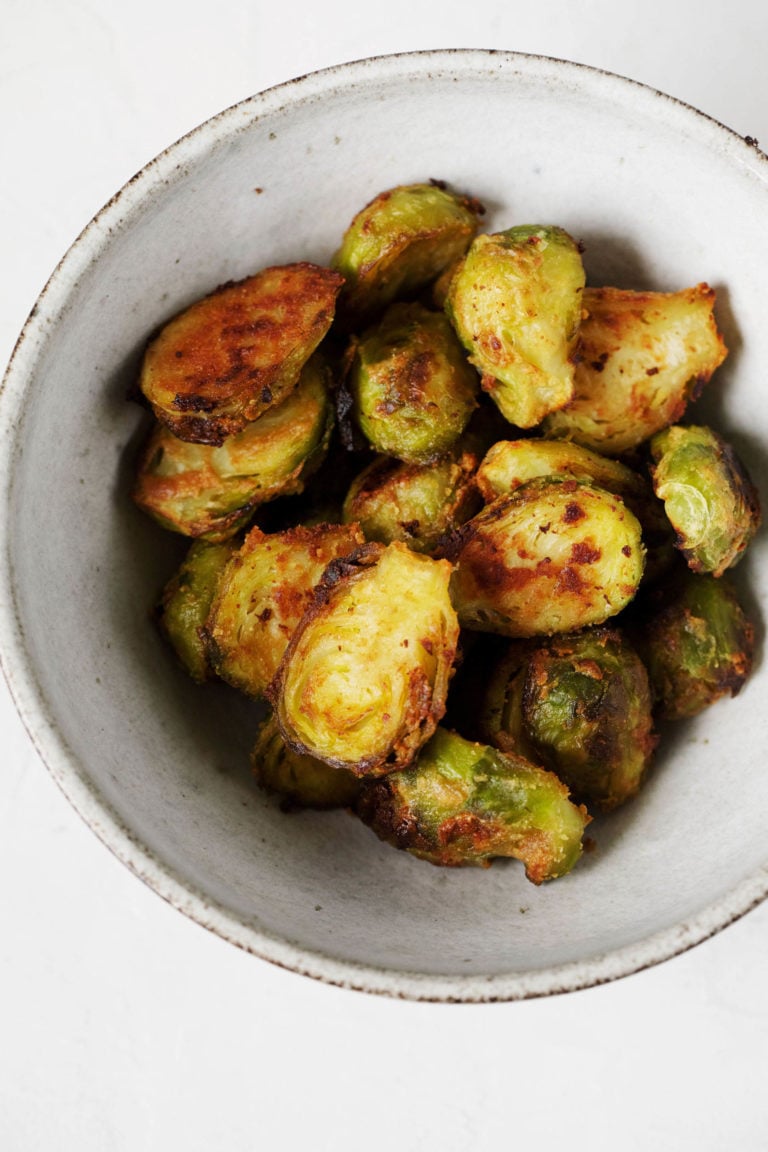
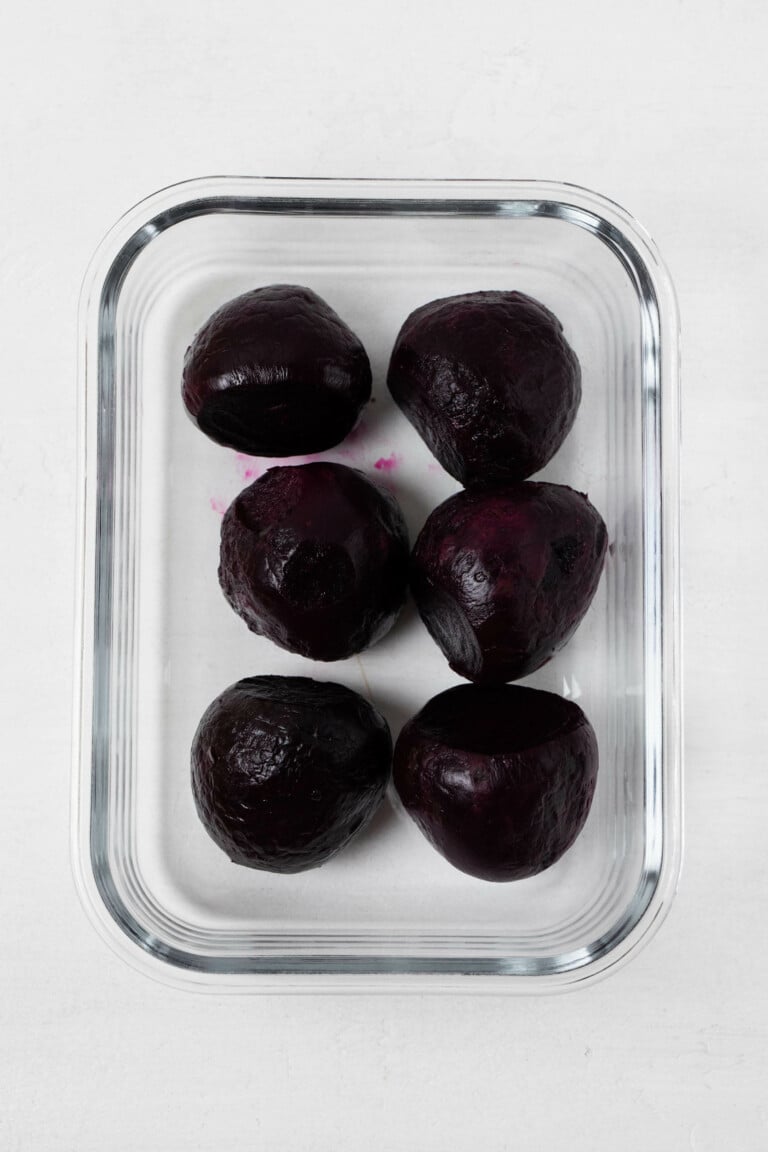
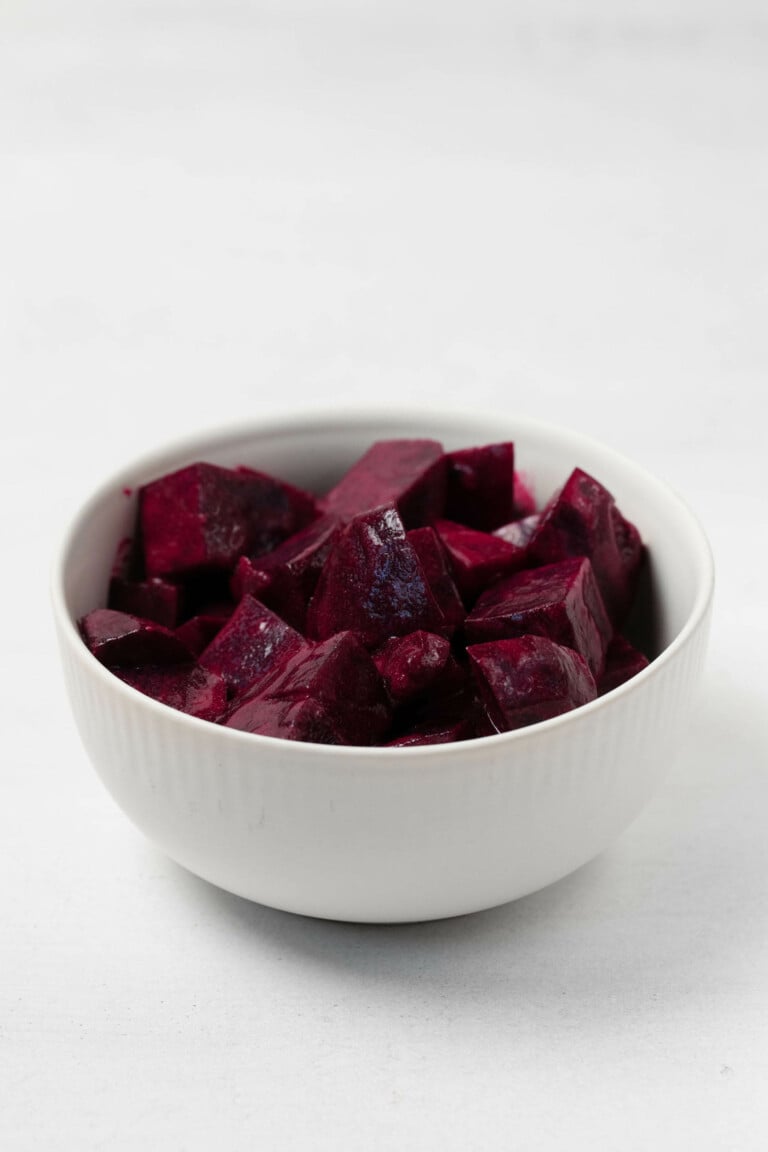
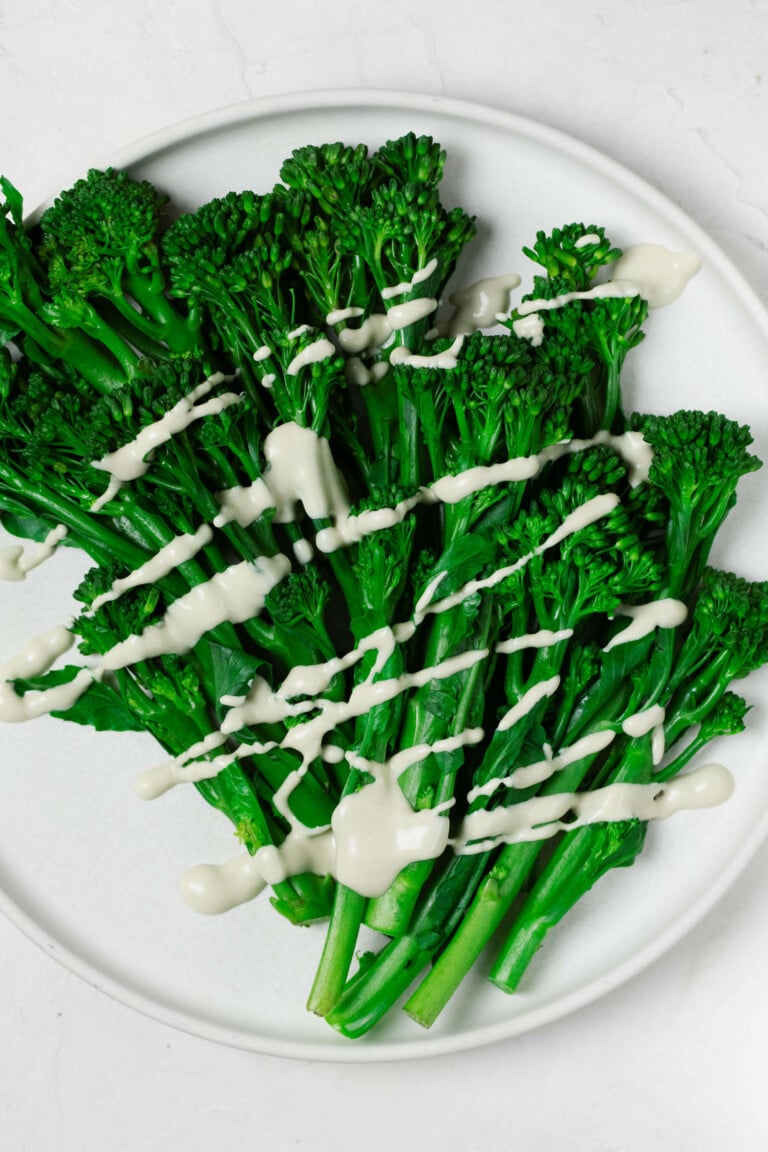
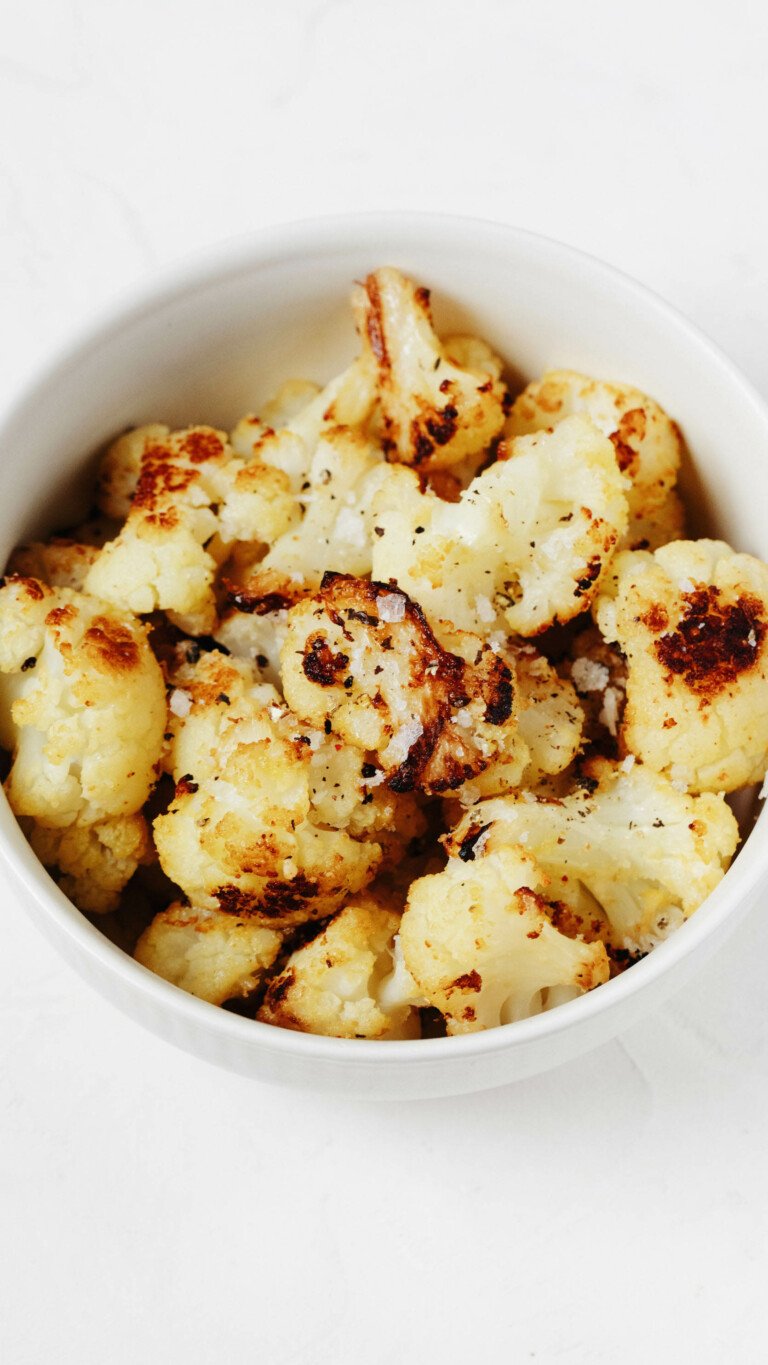
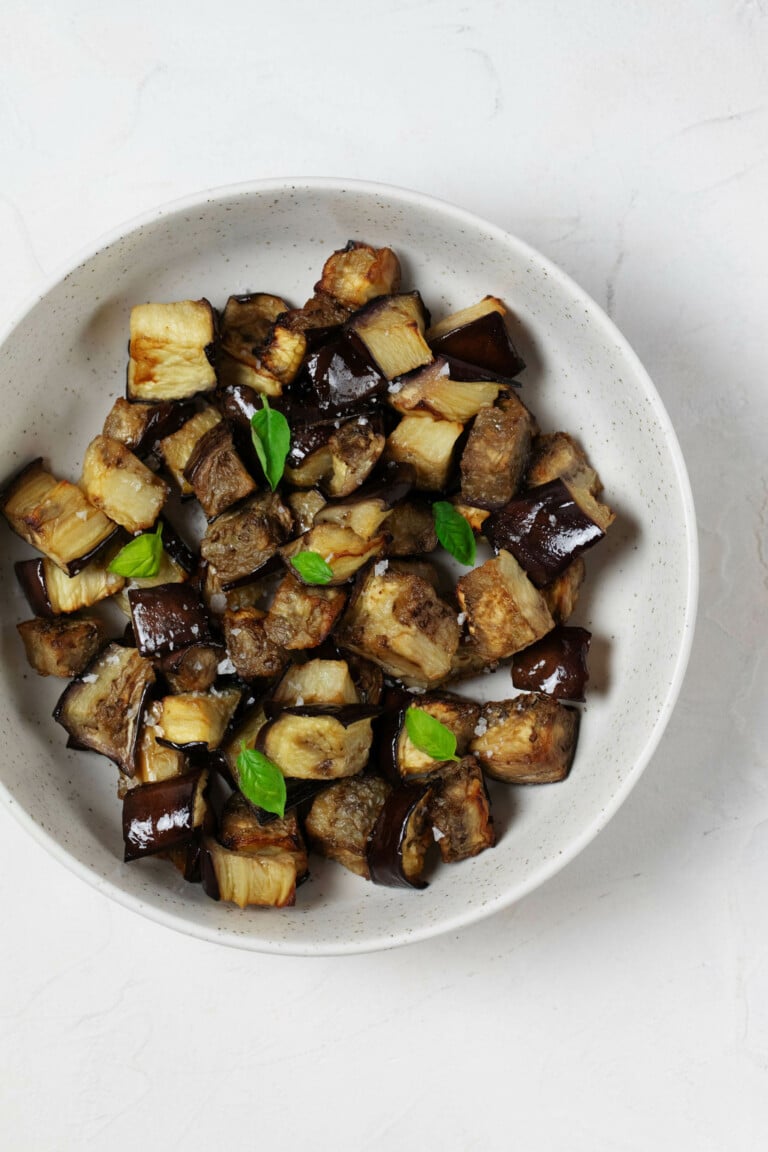
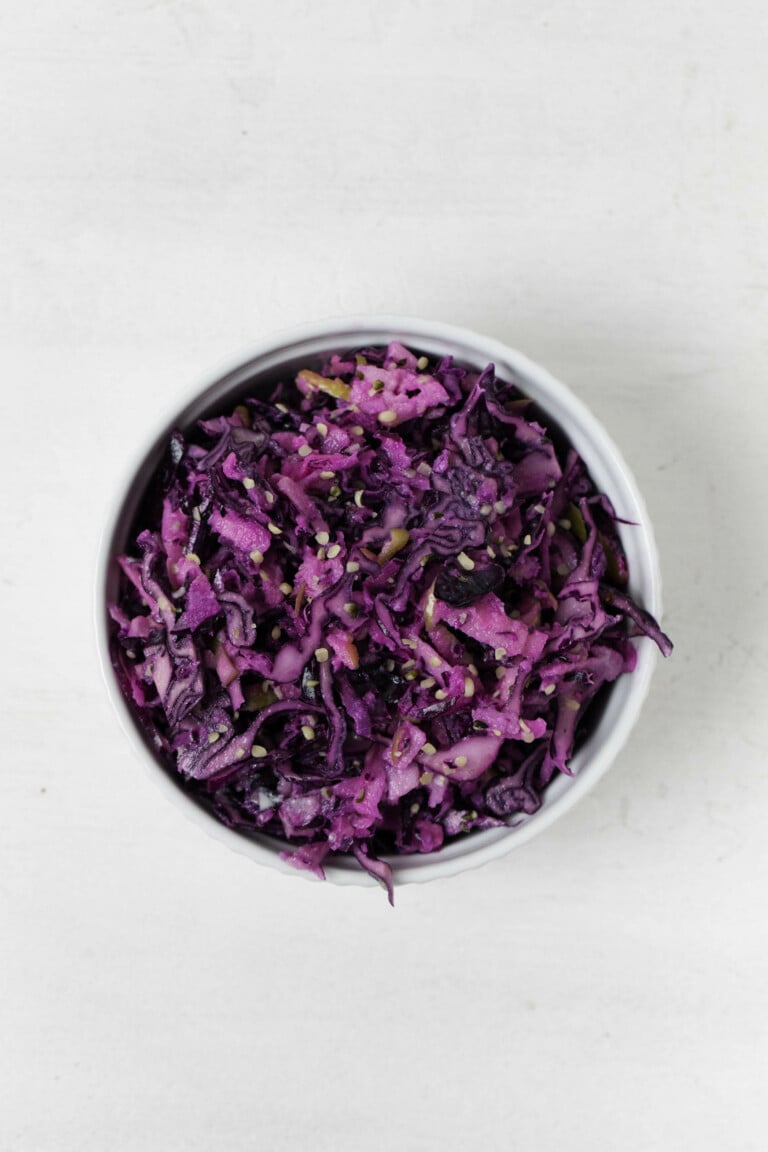
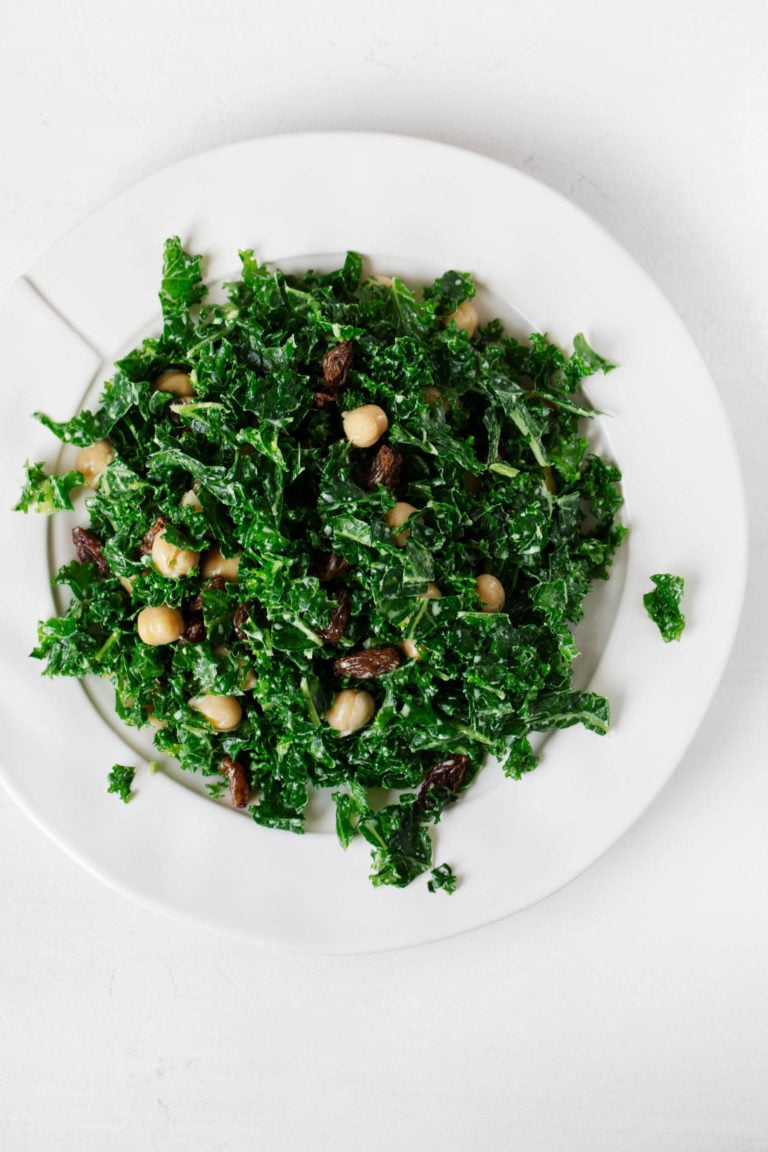
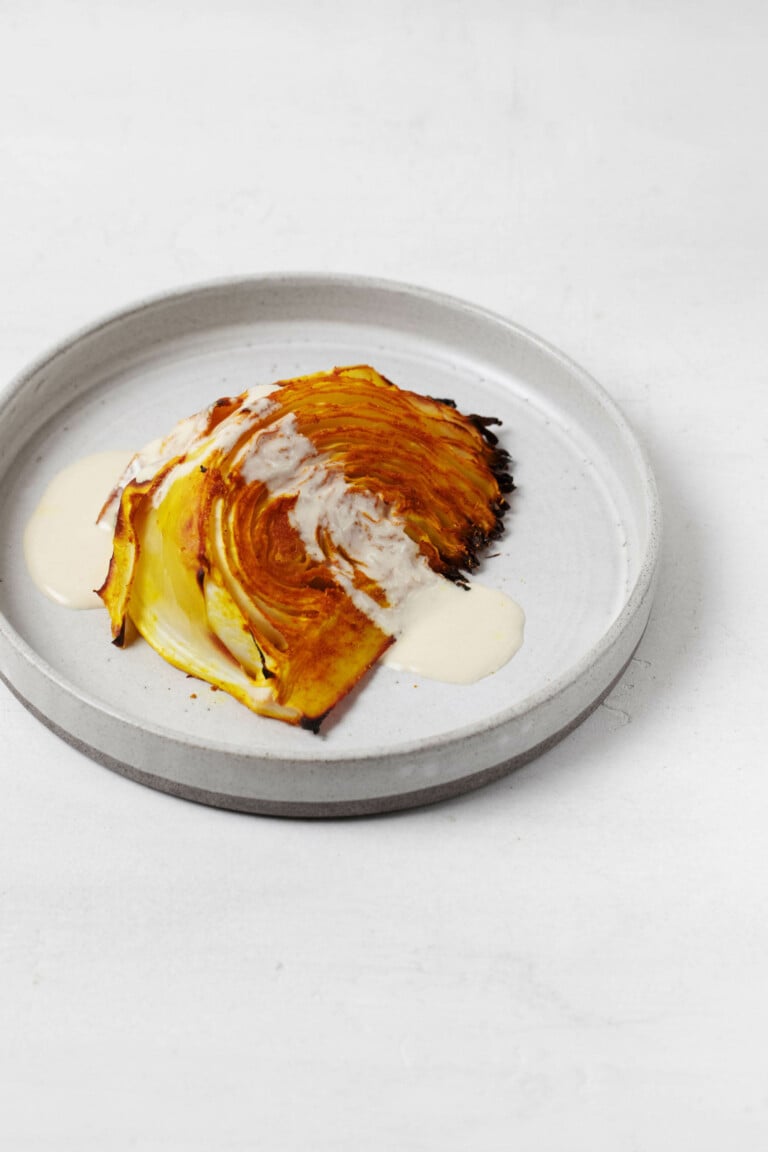
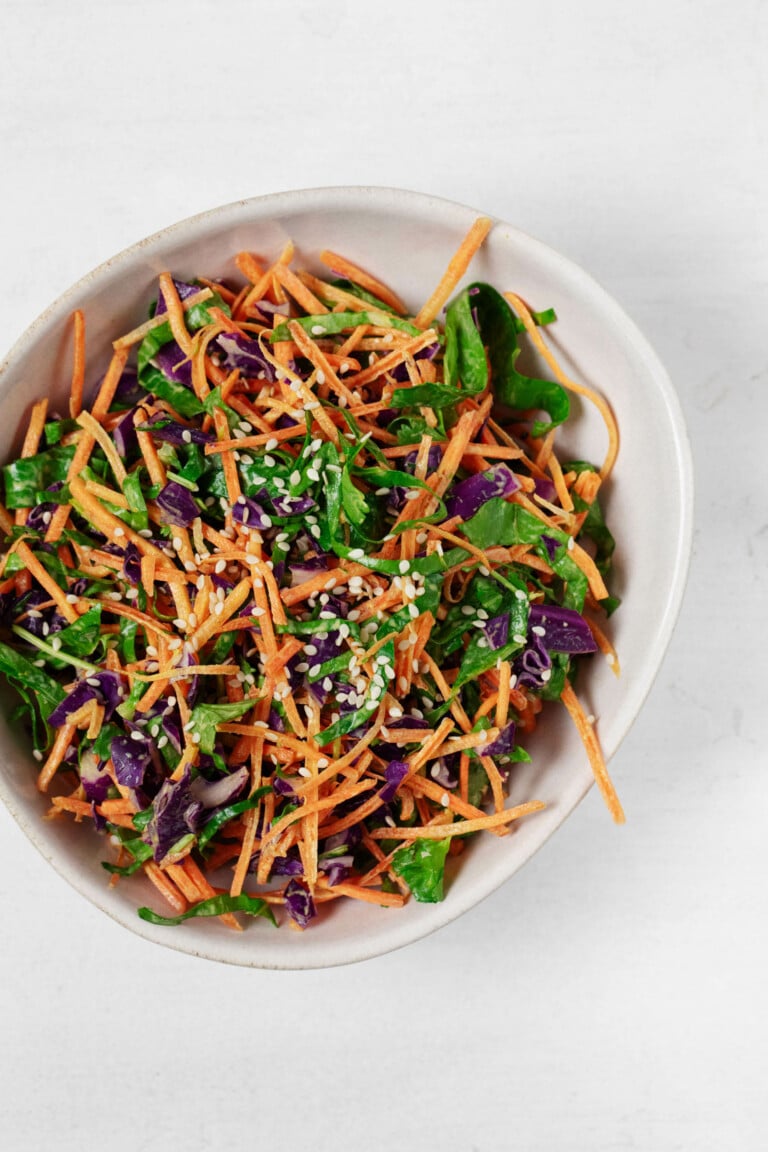
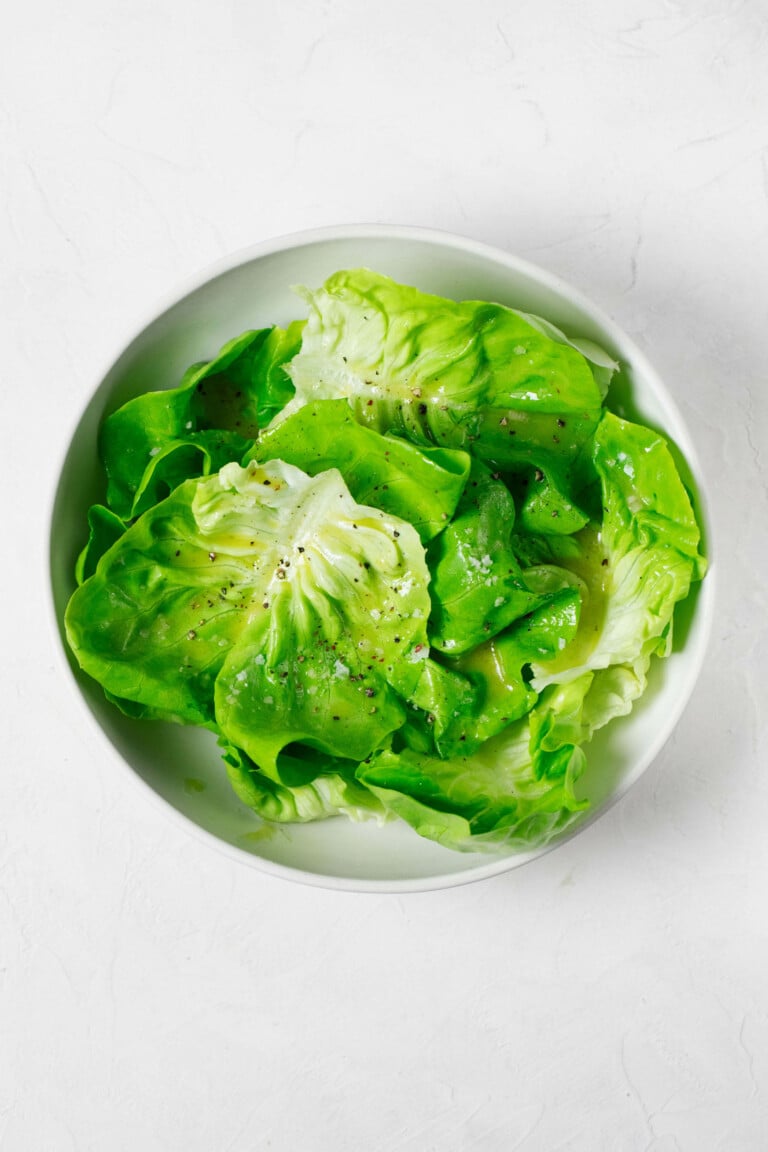
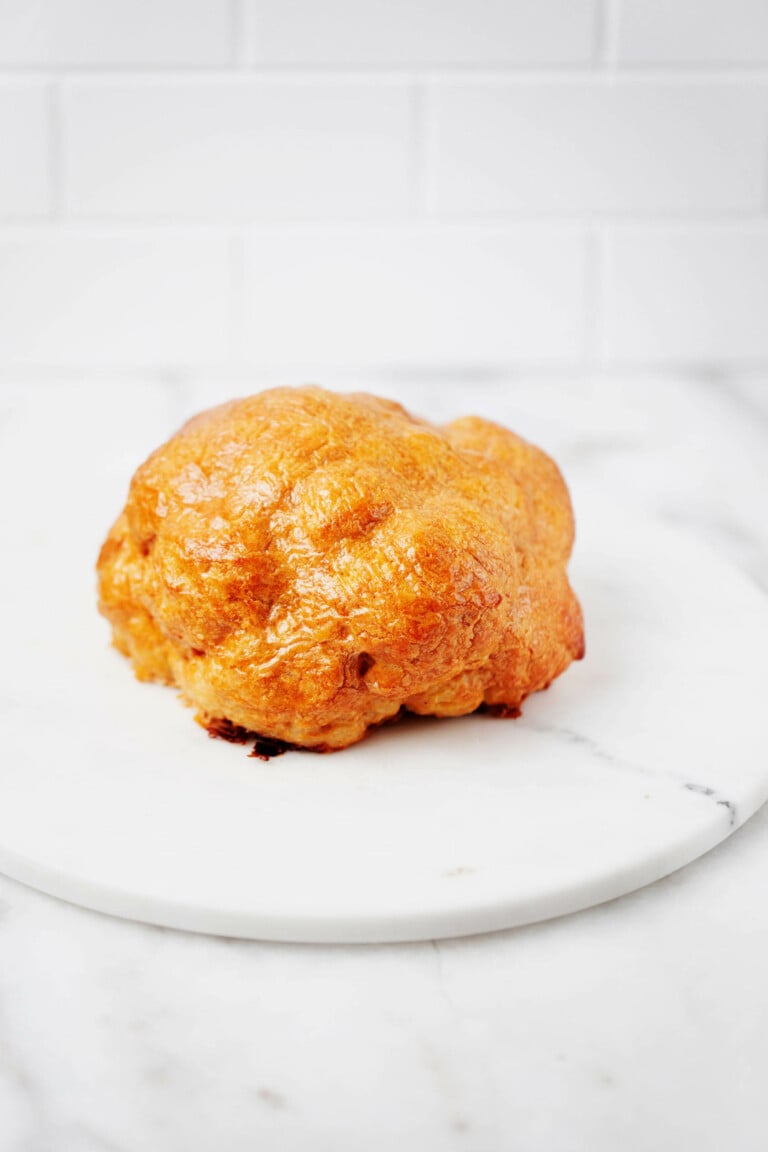
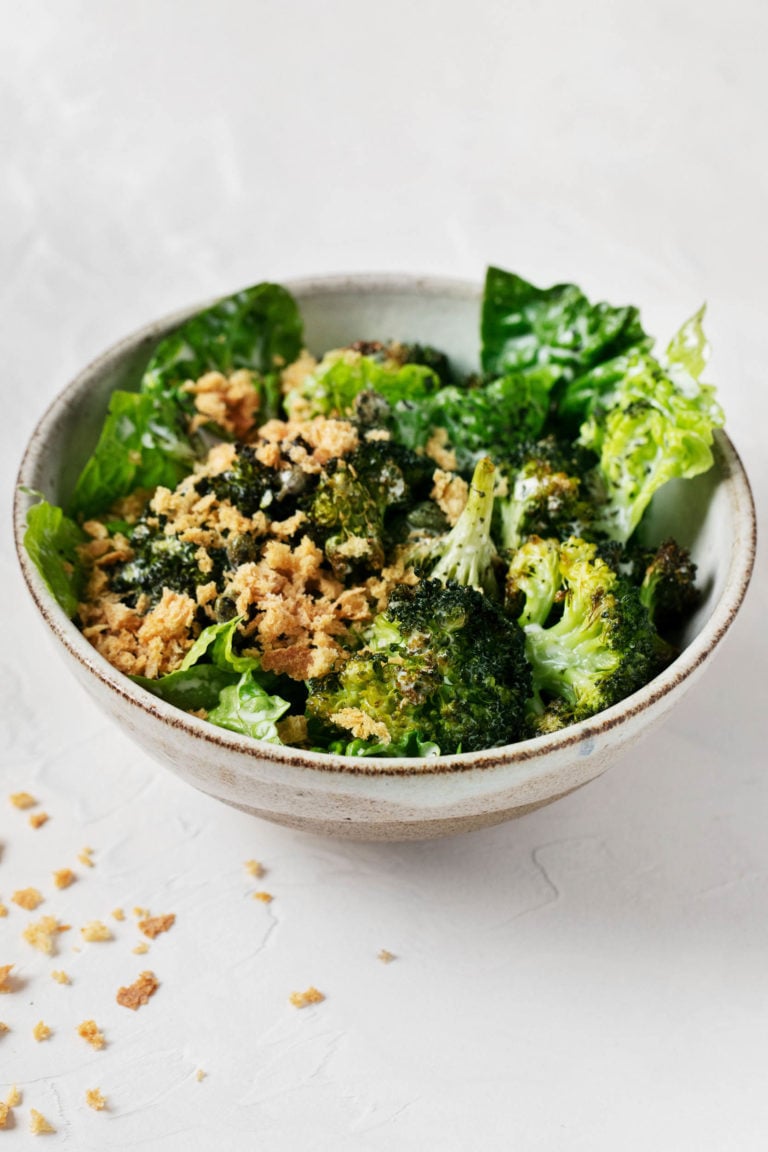
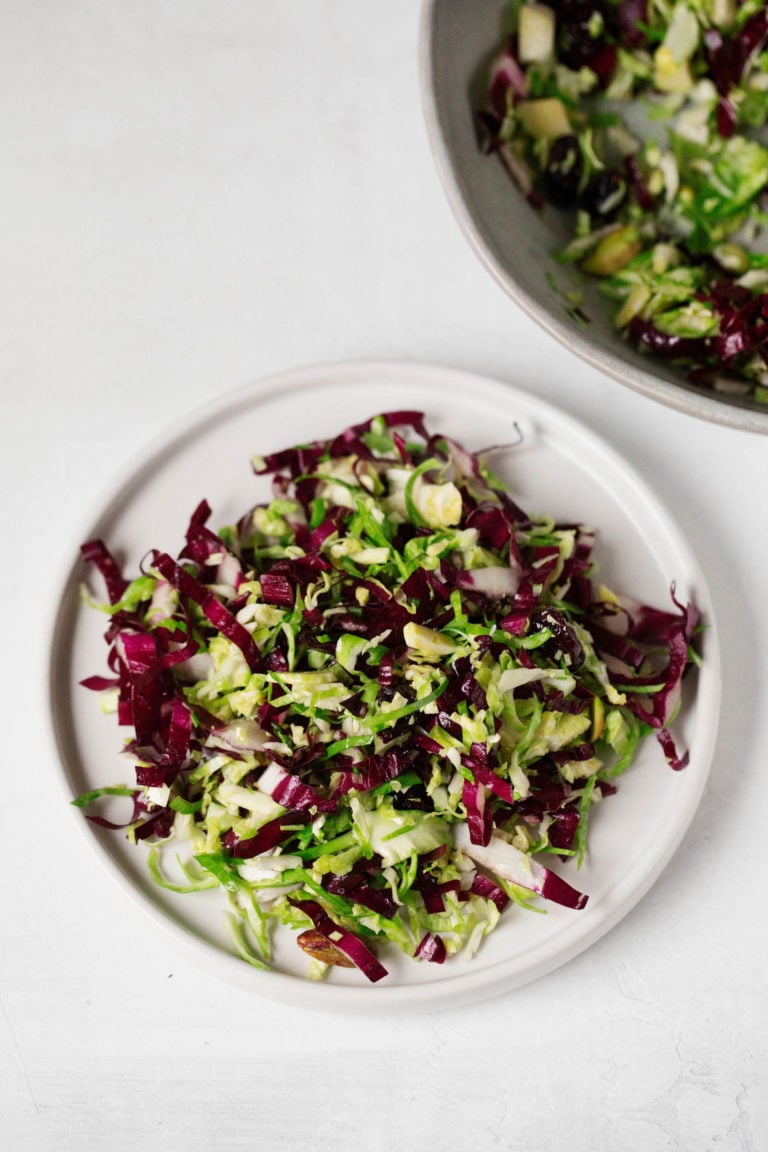
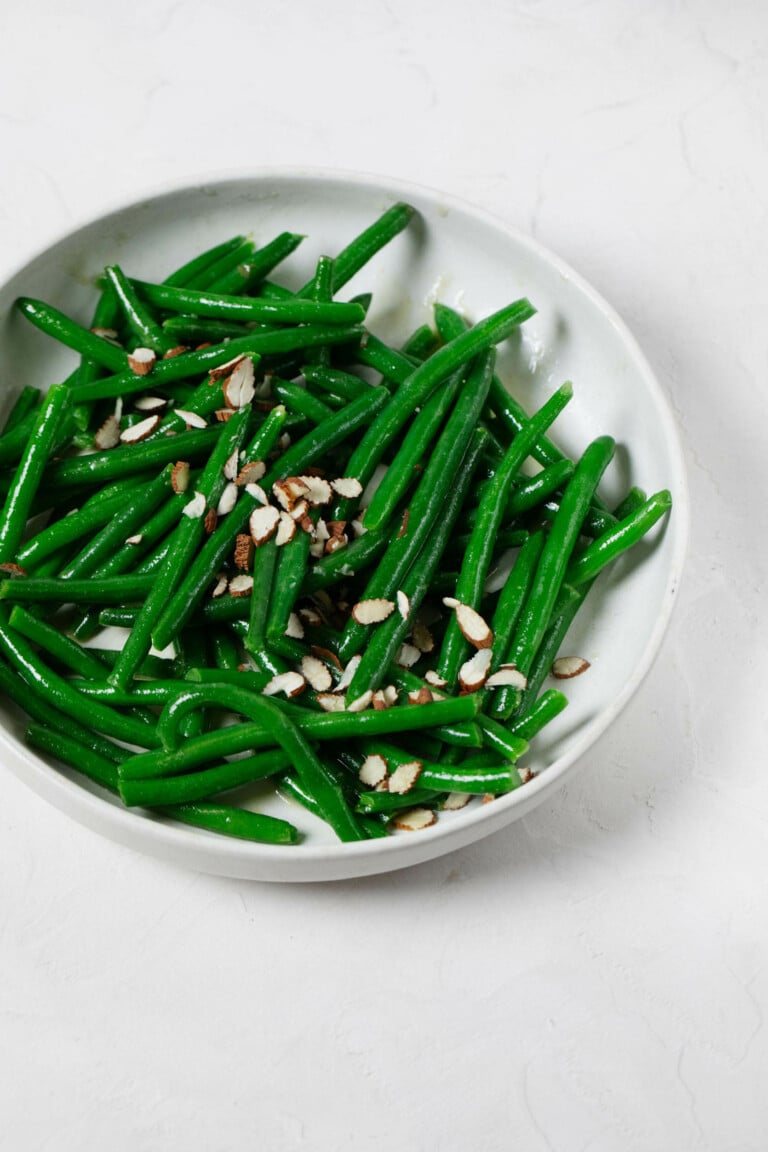
Quick Steamed Green Beans with Dijon Vinaigrette
I know that I shared these lovely, crisp tender green beans only a few weeks ago. But, when I saw that a good friend had made and loved them just before Christmas, I knew that I wanted to feature them in this roundup.
Green beans are so underrated, if you ask me. They’re inexpensive and easy to find at many times of year where I live.
You can purchase green beans fresh, frozen, or in one of those handy “steam-in-bag” packages that’s meant for the microwave.
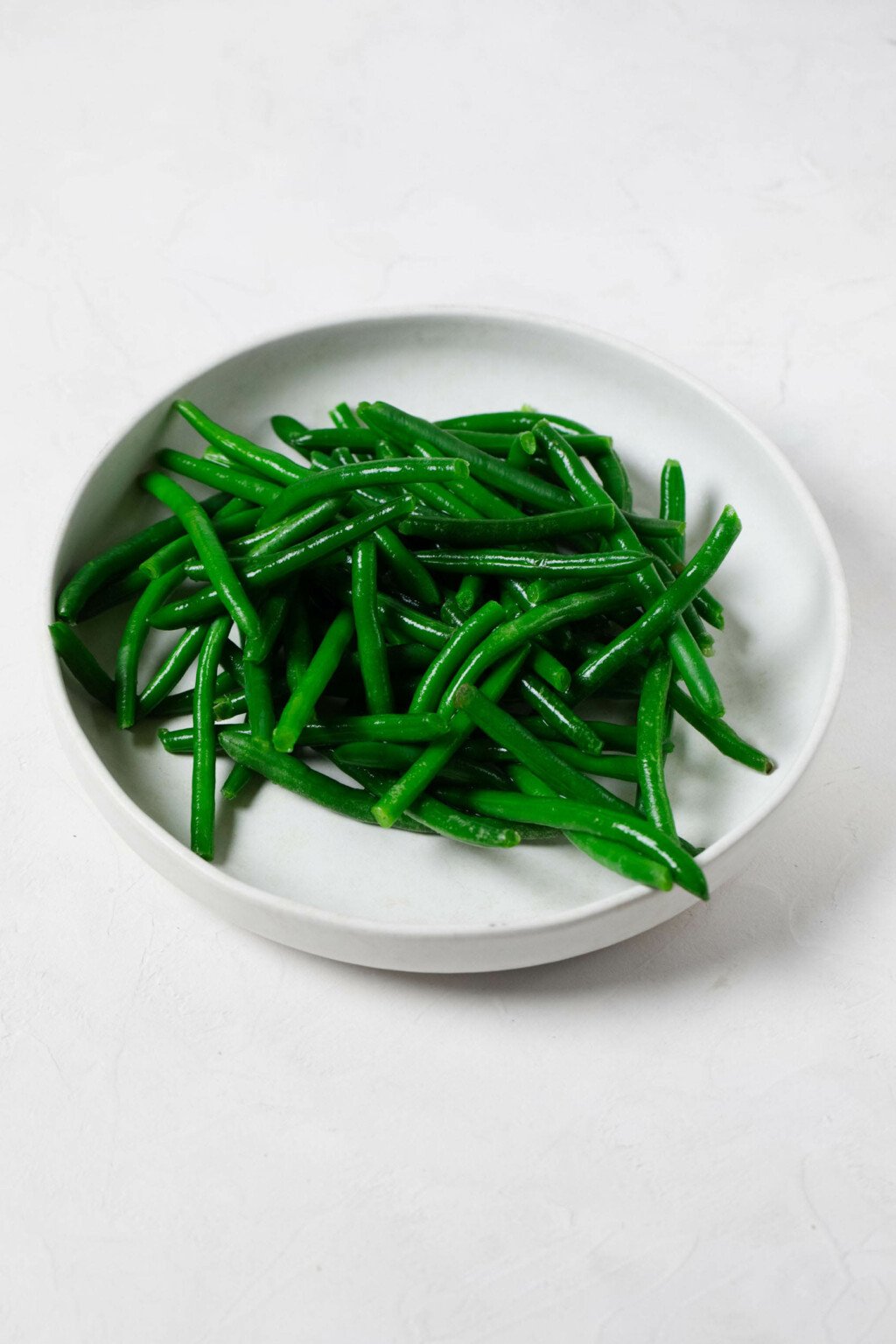
My favorite method for cooking green beans is to steam them. And my favorite way to serve the cooked beans is with a zippy, French-inspired Dijon vinaigrette, along with some toasted, sliced almonds.
This is an easy vegan vegetable side dish that you can make year-round, whether you’re busy or relaxed, cooking for one or serving a group.
I’ve won even stubborn green bean skeptics over with this simple recipe. I hope that it will win you over, too.
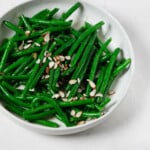
15+ Easy Vegan Vegetable Side Dishes: Quick Steamed Green Beans with Dijon Vinaigrette
Ingredients
Instructions
-
Fill a pot with a few inches of water and fit it with a steamer insert. Bring the water to a boil.
-
Add 12 oz trimmed green beans and steam for 5-6 minutes, or until the beans are entirely tender, but not mushy. Remove the beans from the steamer insert and place them onto a serving dish (or in a storage container, if you're meal prepping).
-
Whisk together the olive oil, vinegar or lemon juice, mustard, salt, and pepper. Pour this over the green beans and mix them in order to distribute the dressing. Top the green beans with the sliced almonds. Serve or store for up to 3 days in an airtight container in the fridge.
There’s a new year around the corner. Whether you already eat plenty of plants or are trying to eat more of them, I hope that this roundup will give you new ideas.
Even as I was writing it, I realized how repetitive I can become with my own vegetable side dishes, and I felt inspired to rediscover other favorites.
Wishing everyone rest and hope as this week wraps up and we move into 2024!
xo
The post 15+ Easy Vegan Vegetable Side Dishes appeared first on The Full Helping.